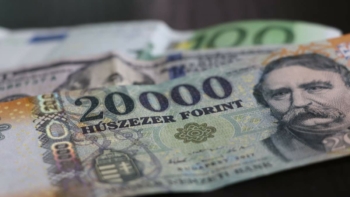500HUF/EUR is closer than you think!
The currency exchange rate of the forint reached a new historic low yesterday morning. We had to pay more than 434 HUF for 1 EUR. The causes are well-known: the Hungarian economy’s dependence on Russian gas, the fact that we have to pay in foreign currency for it and the billions of euros worth of EU funds frozen by the European Commission due to corruption. However, the situation might further deteriorate.
Ill-advised measures
Reuters says the Hungarian National Bank’s latest decision ending its rate-hike cycle last month, even if inflation topped 20 percent, was unwise and ineffective. Not only did the Hungarian currency reach new lows against the euro and us dollar but also against regional currencies this week. Based on their figures, the forint has fallen 14 percent to the euro and 36 percent against the dollar this year. However, it also underperformed in line with the Polish zloty and the Czech crown. Meanwhile, the zloty has lost 24 percent of its value to the dollar, while the crown is down 15.8 percent.
Eszter Gárgyán, an analyst of Citigroup, said that the forint is under considerable pressure due to the rising inflation and the widening trade deficit. Experts agree that the central bank should raise the base interest rate. Naturally, that would be risky since it may result in slower economic growth. JP Morgan wrote that the central bank should raise the base interest rate to 16-17 percent to stabilise the currency exchange rate of the forint.

Read alsoHungarian forint suffers another record plunge – How long will this trend last?
Hungary badly needs euro
Citigroup’s Gárgyán added that a fall in the gas prices and a sharp decline in domestic demand would probably help the forint and rebalance Hungary’s trade deficit. Furthermore, the parliament passed multiple anti-corruption bills. As a result, an agreement with the European Commission to unlock billions of euros is more feasible than ever. However, even in the case of such a deal, that money would only start to flow next year.
Péter Virovácz at ING in Budapest highlighted that “the Hungarian market needed a serious positive message related to a deal on EU funds that could end risk aversion”, Reuters wrote. Without that, the Hungarian forint will remain vulnerable and further negative shifts are likely to happen.

Read alsoWages in euros: a possible alternative in Hungary?
500 HUF/EUR approaching?
Minister of finance Mihály Varga blamed the USD for the plunge of the forint, napi.hu wrote. He added that the government was committed to protecting the Hungarian currency.
Weakening is not unique in the history of the Hungarian national currency. One of the greatest slumps of the forint was between the summer of 2008 and the March of 2009. During the global financial crisis, the forint crashed from 227 HUF/EUR to 317 HUF/EUR. That meant a 40 percent fall in less than a year. In April 2008, opposition leader Viktor Orbán said that the then-Hungarian prime minister, Ferenc Gyurcsány, could not govern if 1 EUR rose above 300 HUF and must resign.
If we take the February local minimum of the forint at 352 HUF/EUR, such a weakening would mean a 490 HUF/EUR currency exchange rate. Provided that occurs, only one misfortunate interview would be enough to reach the 500 HUF/EUR psychological threshold. That scenario is even more likely because the forint has been already on a weakening course.
Source: Reuters, napi.hu
please make a donation here
Hot news
Container transport in Budapest may stop: How will this affect Hungarian economy?
Minister: Hungary will protect its territory by every means possible
Orbán cabinet may double airspace fee: another ticket price increase?
Hungary expanding the list of prohibited designer drugs
Hungarian minister: Ukraine ‘blackmailing’ Hungary and pro-peace states
Cocaine found on a Greek bus at southern border of Hungary




